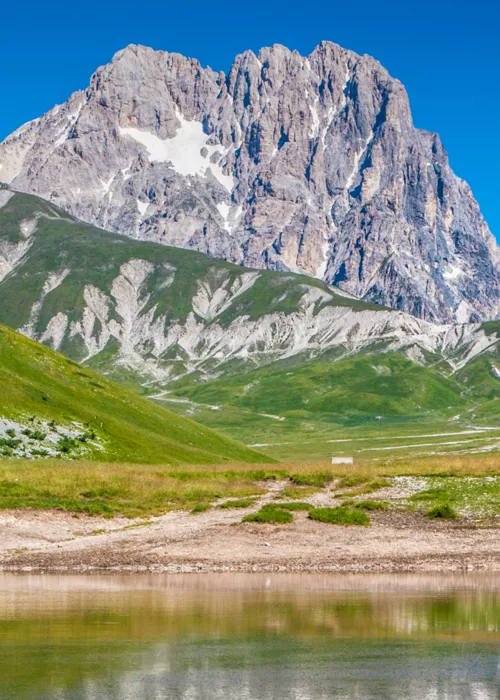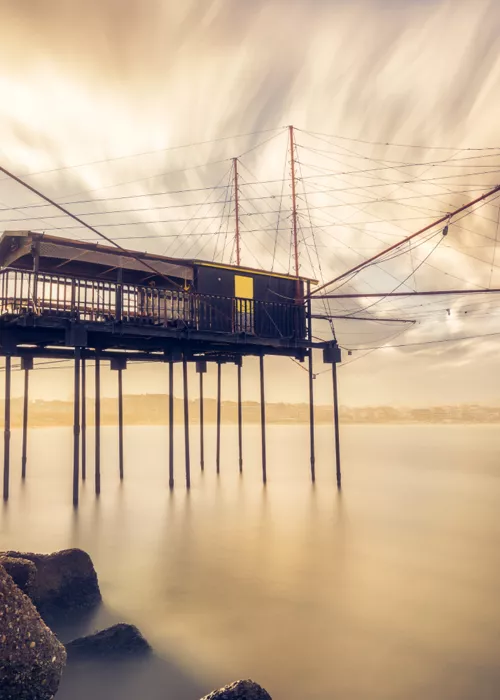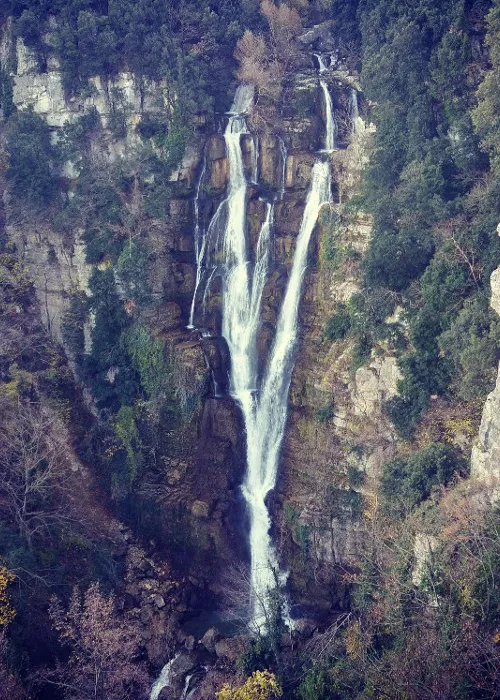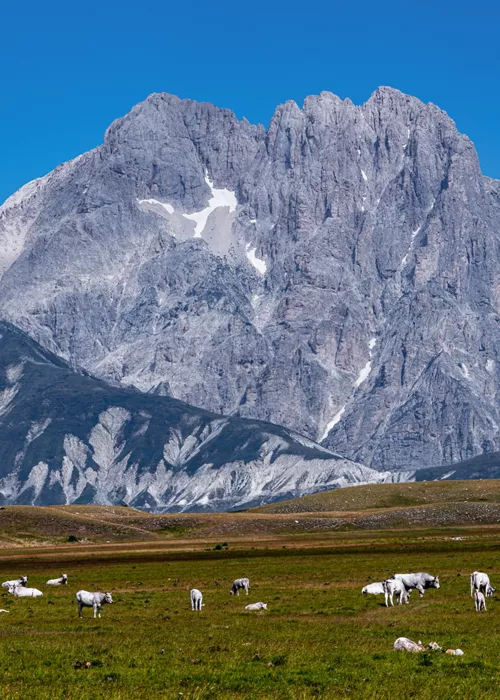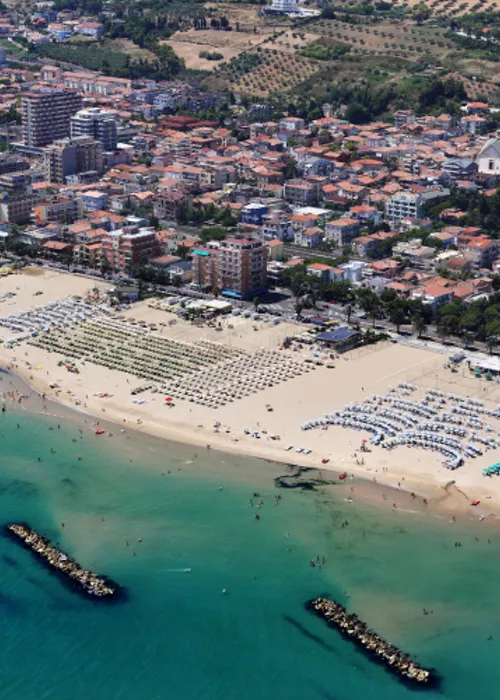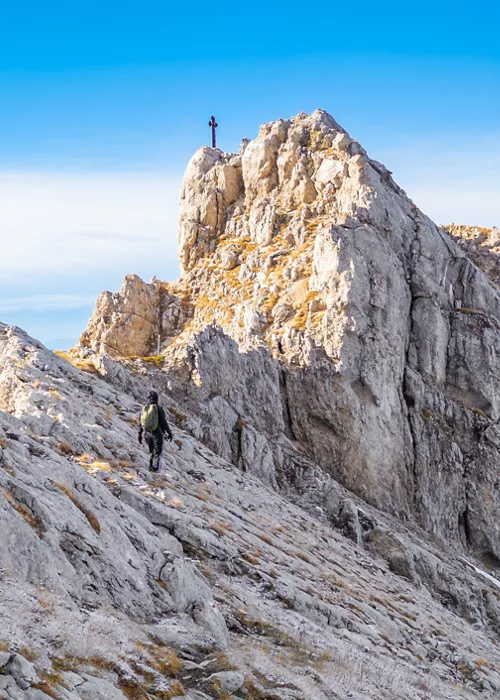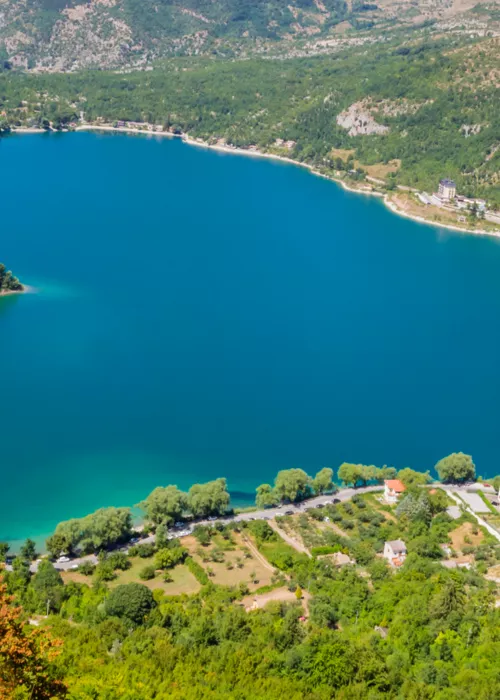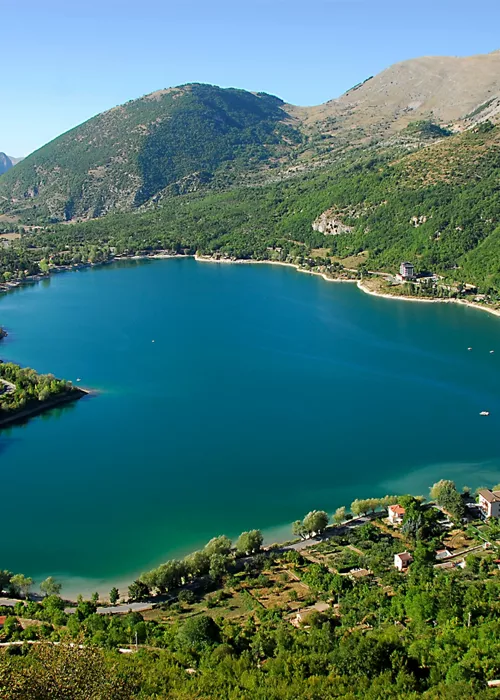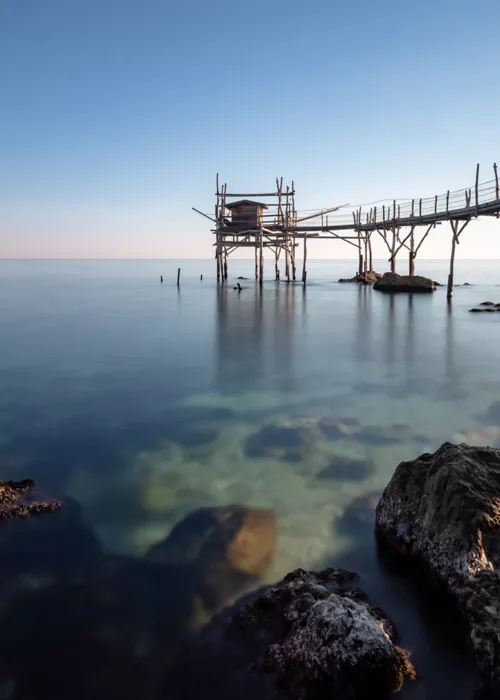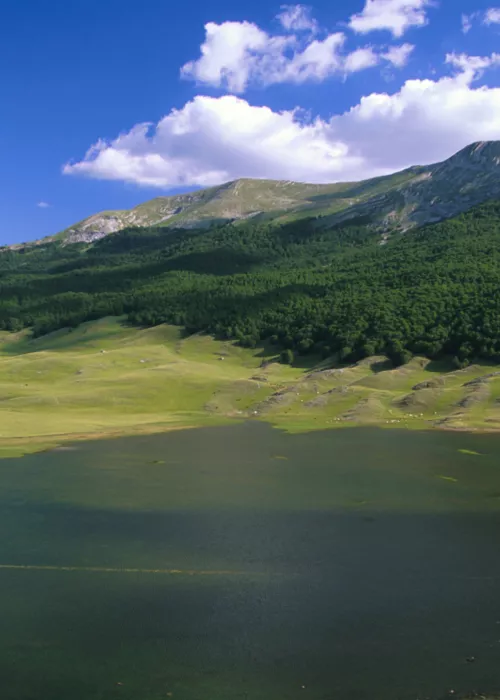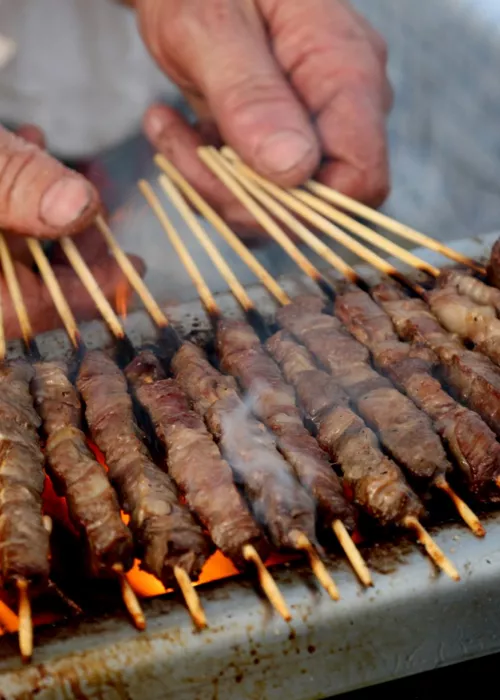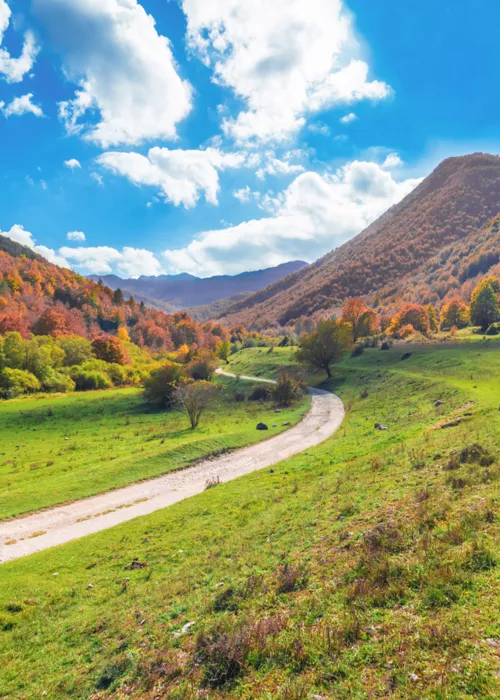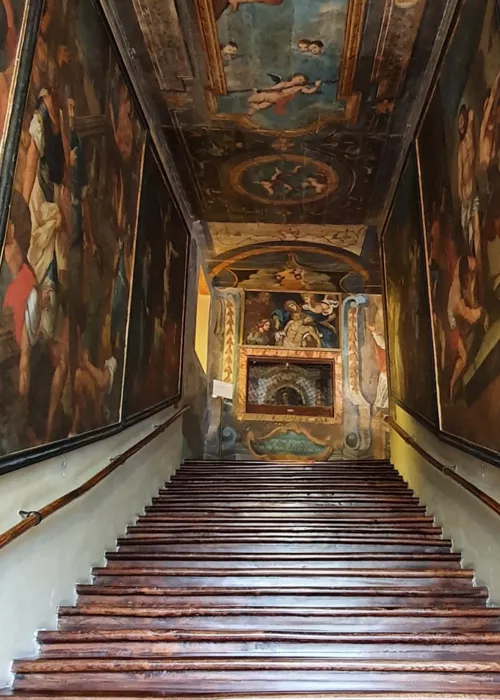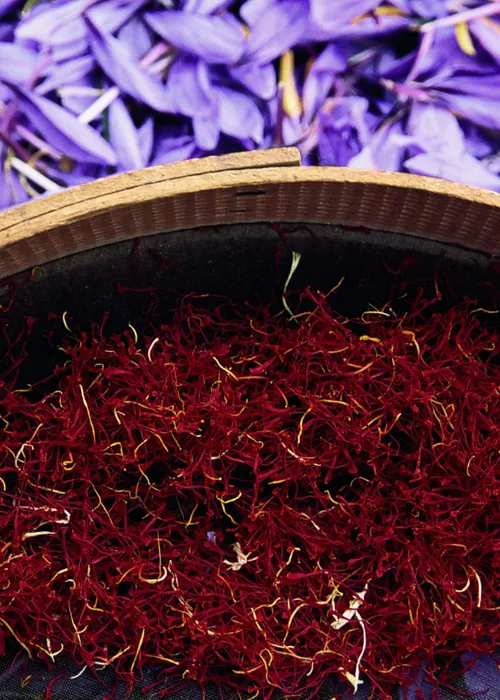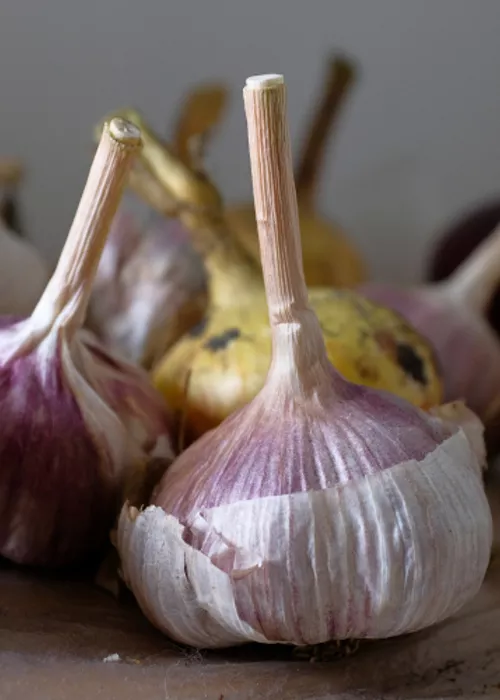Abruzzo, the green region of Europe
4 minutes

Overlooking the Adriatic Sea, with the Gran Sasso, Majella and Mount Velino behind it, Abruzzo enjoys a unique biodiversity associated with a territory rich in history, identity and food and wine experiences.
Territory and resources
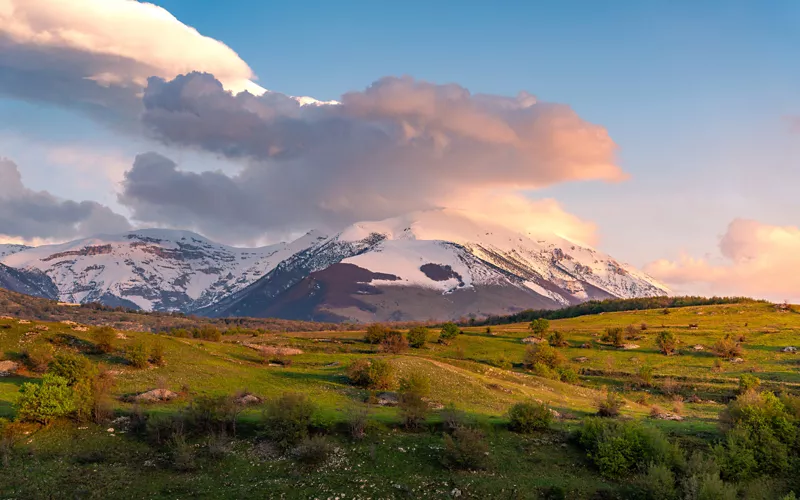
One third of the territory of Abruzzo is bound by protected areas: three National Parks, a Regional Park and over thirty Natural Reserves, hence the name of the Green Region of Europe. This is a strong, far-sighted choice for a region that has made the environment its most important asset and casts the region in a leading role in the field of "green tourism".
Within the Apennine regions, Abruzzo is characterised by the predominantly mountainous nature of its territory, with two-thirds of the regional area above 750 metres above sea level. This characteristic is due to the particular development that the Apennines assume in their central section, in which – in addition to retaining their median course with respect to the peninsula – they expand transversally, giving rise to a complex system of parallel mountain ridges, interspersed with vast plateaus.
This strong mountain hub, located entirely in Abruzzo, boasts the greatest peaks of the Apennines, with the Corno Grande of the Gran Sasso (2912 m above sea level), Monte Amaro della Majella (2794 m above sea level) and Monte Velino (2486 m above sea level).
Equally characteristic is the coastal side, with kilometres of beaches and a stretch that has become iconic: the Trabocchi Coast and the Via Verde, a cycle path close to the sea, from where the first stage of last year's Giro d'Italia started.
Trabocchi Coast
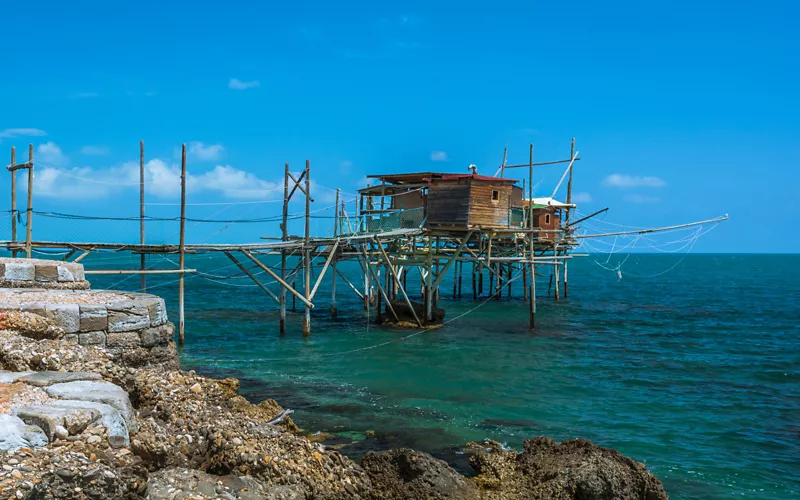
Trabocchi are ancient fishing machines typical of the Abruzzo coast (with different versions in Molise and Puglia). These imposing wooden structures, built principally with Aleppo pine, extend from the beach towards the sea. It is thought that the fishing technique used by local fishermen may even date back to the time of the Phoenicians. One of the first documents attesting to the presence of trabocchi in the area dates back to the 15th century. The document tells the life of Fra Pietro da Morrone, who later became Pope Celestine V.
The Trabocchi Coast is, therefore, the beautiful stretch of Abruzzo coastline that hosts magnificent trabocchi. The stretches where you can admire them, and swim, are mainly Ortona, San Vito Chietino and Rocca San Giovanni.
Evocative landscapes and experiences that are amplified when combined with food and wine highlights.
A tour of Abruzzo in a glass. The native denominations
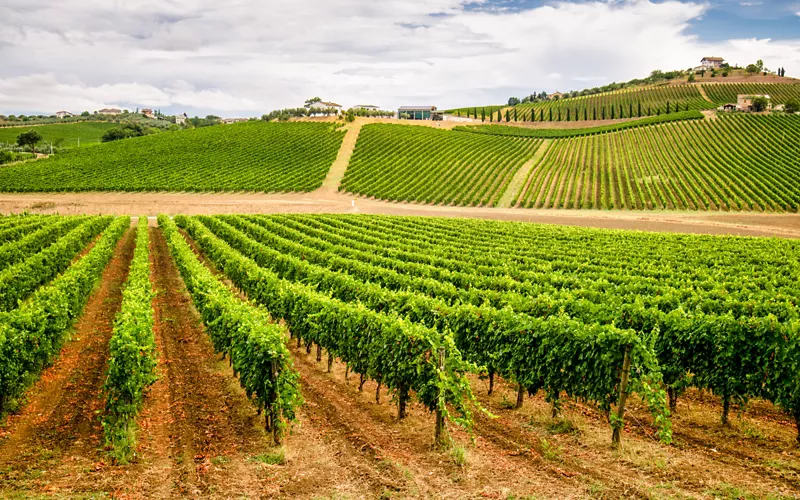
The quality of Abruzzo's wine production has risen significantly over the last 20 years. Native varieties are increasingly gaining popularity on the international scene. Trebbiano d'Abruzzo DOC, obtained from the vine of the same name, is very popular. Famous for its ageing capacity; it expresses fruity and floral aromas, accompanied by mineral notes. Pecorino, much appreciated in its pure form, is savoury, fresh and endowed with character. It is also in great demand in the sparkling wine version. Another interesting wine is Cococciola, which is beginning to achieve promising results; a variety vinified in both still and sparkling versions.
Also worthy of mention is Cerasuolo d 'Abruzzo, a rosé obtained from Montepulciano grapes. We can certainly define it as one of the best Italian rosés both for its highly pleasing taste and for its excellent compromise between structure and freshness, perfect for the entire meal and with great pairing versatility. Cerasuolo d 'Abruzzo is one of the longest-lived rosés on the Italian wine scene.
The symbolic wine is Montepulciano d'Abruzzo DOC. There are many interpretations, and DOCG Montepulciano d'Abruzzo Colline Teramane, an expression of the northern part, bordering on the Marche region, is very distinctive.
Montepulciano d'Abruzzo is a full-bodied yet elegant wine, rich, balanced and suitable for ageing.
The creative recipe: pasta and vegetable textures
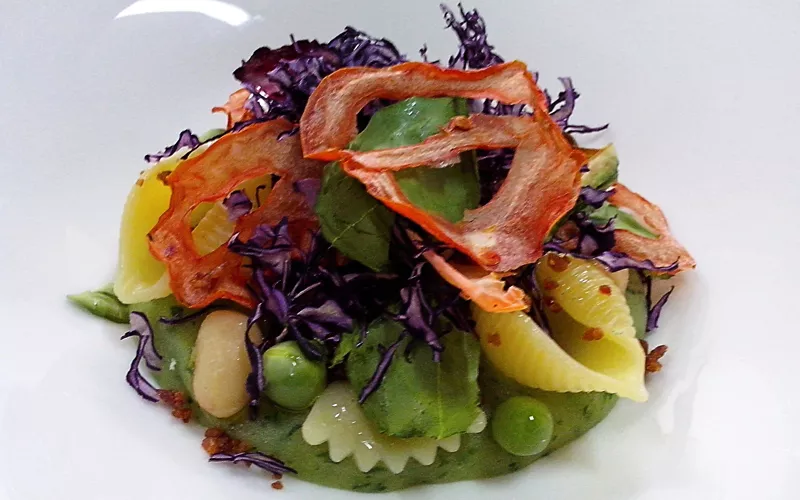
Recipe by Abruzzo chef, Nadia Moscardi. A creative reinterpretation of a famous traditional dish based on pulses, vegetables and pasta; a dish currently defined as reclaimed and in line with the concept of the circular economy: Virtù Teramane.
<<The dishes are always linked to the region, to local products and to tradition, but interpreted in a modern way with new cooking techniques and preparations in tune with the times. Dishes of fond memories that touch the heart with their modernly interpreted aromas and flavours, but always underpinned by the authenticity of the ingredients.>>
Nadia Moscardi
Difficulty: Medium
Serves: 4 people
Ingredients
50 g Paganica white beans, 20 g Navelli chickpeas, 20 g S. Stefano lentils, 400 g courgettes, 50 g sliced ham, 20 g baby spinach, 20 g farfalle, 20 g penne, 20 g conchiglie rigate, 20 g mezzi rigatoni. White onion, extra-virgin olive and peanut oil
Method steps
Soak the legumes overnight and then boil them. Place the ham in the oven at 100°C for 25/30 minutes, let it cool and then blend. Boil the potatoes, sauté them in a pan with some oil, the onion and raw spinach, season with salt and then blend everything together. Cook the pasta, first the mezzi rigatoni and conchiglie and after 2 minutes the remaining pasta until cooked through. Fry the courgette cut into thin slices in hot oil. Serve the cream of potato with the pasta on top, a drizzle of extra-virgin olive oil, the pulses, the vegetables, the fried courgette and the cream of ham.
The pairing: Cerasuolo d'Abruzzo Doc
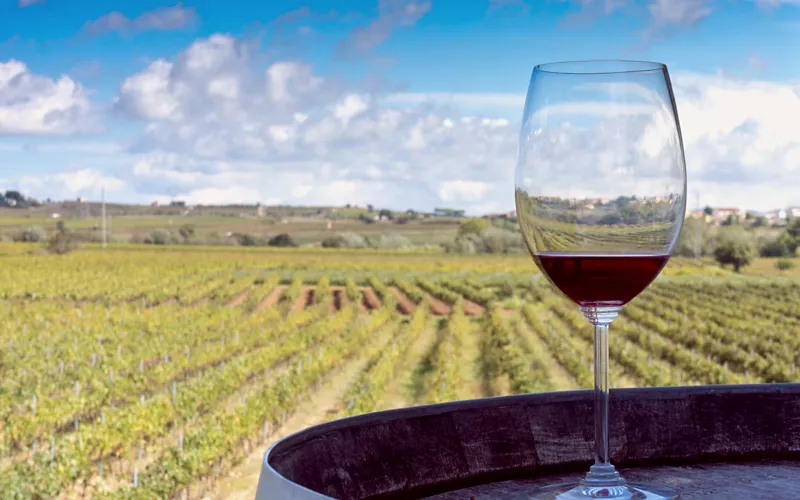
Cerasuolo d'Abruzzo goes well with this traditional Abruzzo dish, which is rich in ingredients and also has a fried component. A rosé obtained from pure Montepulciano d'Abruzzo grapes. It offers fruity hints of cherry, strawberry and pomegranate, with a slight touch of tomato leaf. Endowed with excellent structure, it has an enveloping, fruity and slightly savoury character.


